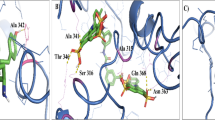Abstract
The defined medium of Steiger and Steiger conditioned by growth ofLeishmania donovani strain 3S promastigotes served as the primary source of parasite exometabolites. Four fractions of the conditioned medium were recovered by Sephadex G-25 column chromatography. These fractions shared immunologic determinants, but differed in their molecular weights, affinity for Sephadex G-25, and absorption spectra. Degradation and/or aggregation of one of the fractions (Fraction IV) appeared to yield substances found in the remaining three fractions. Furthermore, by appropriate manipulations, Fraction IV could be transformed into substances resembling those described by previous workers, eg., excretory factor (EF) or antigenically active glycoproteins (AAGP). The present findings suggest that the primary exometabolite released byL. donovani is a small glycopeptide-like molecule; however, in media conditioned by growth of promastigotes and during isolation procedures, aggregation and/or degradation processes yield higher molecular weight substances which vary in size and physico-chemical properties.
Similar content being viewed by others
References
Adler, S., Gunders, A.E.: Secretion of antigen in cultures of leptomonads and hamster spleen infected withLeishmania. J. Protozool.11 (Suppl), 42 (1964)
Andrews, P.: Estimation of molecular size and molecular weights of biological compounds by gel filtration. Methods Biochem. Anal.18, 1–53 (1970)
Carbis, R.A., Rodda, S.J., Hampson, A.W.: Adsorption of deoxycholate on Sephadex G-25. J. Chromatogr.173, 182–186 (1979)
Clinton, B.A., Palczuk, N.C., Stauber, L.A.:Leishmania donovani; partial characterization of some flagellate cytoplasmic immunogens. J. Immunol.108, 1570–1577 (1972)
Decker-Jackson, J.E., Honigberg, B.M.: Glycoproteins released byLeishmania donovani: Immunologic relationships with host and bacterial antigens and preliminary biochemical analysis. J. Protozool.25, 514–525 (1978)
Dubois, M., Gilles, K.A., Hamilton, J.K., Rebers, P.A., Smith, F.: Colorimetric method for determination of sugars and related substances. Anal. Chem.28, 350–356 (1956)
El-On, J., Schnur, L.F., Greenblatt, C.L.:Leishmania donovani: Physiochemical, immunological, and biological characterization of excreted factor from promastigotes. Exp. Parasitol.47, 254–269 (1979)
Fasman, G.D., ed.: Handbook of biochemistry and molecular biology. 3rd edn., Vol. II, pp. 558–562, 563–564. Cleveland, Ohio: CRC Press 1976
Garvey, J.S., Cremer, N.E., Sussdorf, D.H.: Methods in immunology, 3rd edn., p. 313. New York: W.A. Benjamin 1977
Goldman, M., Honigberg, B.M.: Immunologic analysis by gel diffusion technics of the effects of prolonged cultivation ofTrichomonas gallinae. J. Protozool.15, 350–352 (1968)
Light, A., Smith, E.L.: Amino acid analysis of peptides and proteins. In: The proteins—composition, structure, and function. Vol. 1, H. Neurath, ed., pp. 2–39. New York: Academic Press 1963
Mayer, M.M., Miller, J.A.: Photometric analysis of proteins and peptides at 191–194 mμ. Anal. Biochem.36, 91–100 (1970)
Schnur, L.F., Zuckerman, A., Greenblatt, C.L.: Leishmanial serotypes as distinguished by the gel diffusion of factors excreted in vitro and in vivo. Isr. J. Med. Sci.8, 932–942 (1972)
Semprevivo, L.H.: Exometabolites ofLeishmania donovani promastigotes. I. Isolation and initial characterization. Proc. Soc. Exp. Biol. Med.159, 105–110 (1978)
Shaw, J.J., Lainson, R.: Leishmaniasis in Brazil: X. Some observations on intradermal reactions of different trypanosomatid antigens of patients suffering from cutaneous and mucocutaneous leishmaniasis. Trans. R. Soc. Trop. Med. Hyg.69, 323–335 (1975)
Slutzky, G.M., Greenblatt, C.L.: Isolation of a carbohydrate-rich immunologically active factor from cultures ofLeishmania tropica. FEBS Lett.80, 401–404 (1977)
Slutzky, G.M., Greenblatt, C.L.: Analysis by SDS-polyacrylamide gel electrophoresis of an immunologically active factor ofLeishmania tropica from growth medium, promastigotes, and infected macrophages. Biochem. Med.21, 70–77 (1979)
Stauber, L.A.: Characterization of strains ofLeishmania donovani. Exp. Parasitol.18, 1–11 (1966)
Steiger, R.F., Steiger, E.: A defined medium for cultivatingLeishmania donovani andL. braziliensis. J. Parasitol.62, 1010–1011 (1976)
Wonde, T., Honigberg, B.M.: Morphology and infectivity ofLeishmania donovani cultivated in nonliving media at elevated temperatures. Am. J. Trop. Med. Hyg.20, 828–838 (1971)
Author information
Authors and Affiliations
Rights and permissions
About this article
Cite this article
Semprevivo, L.H., Honigberg, B.M. Exometabolites ofLeishmania donovani promastigotes. Z. Parasitenkd. 62, 201–211 (1980). https://doi.org/10.1007/BF00926562
Received:
Issue Date:
DOI: https://doi.org/10.1007/BF00926562




